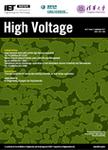Effect of the grain boundary character distribution on the sulfur corrosion behaviour and mechanisms of copper windings under different high temperatures
作者机构:Chongqing Univ State Key Lab Power Transmiss Equipment & Syst Sec Chongqing Peoples R China Chongqing Univ Coll Mat Sci & Engn Chongqing Peoples R China Dongfang Elect Machinery Co Ltd Deyang Peoples R China
出 版 物:《HIGH VOLTAGE》 (高电压(英文))
年 卷 期:2024年第9卷第3期
页 面:566-580页
核心收录:
学科分类:0808[工学-电气工程] 08[工学] 080502[工学-材料学] 0805[工学-材料科学与工程(可授工学、理学学位)]
基 金:National Natural Science Foundation of China Electron Microscope Center of Chongqing University College of Chemical Engineering, Southeast University for guiding Studies on reaction thermodynamics 51677015
主 题:OIL-PAPER INSULATION DIBENZYL DISULFIDE POWER TRANSFORMERS STAINLESS-STEEL STRENGTH
摘 要:As a typical failure phenomenon in transformers, sulfur corrosion has garnered significant attention in the field of high-voltage engineering. Grain boundary character distribution (GBCD) copper windings have been introduced to enhance sulfur corrosion resistance by slowing down intergranular corrosion. In this study, the sulfur corrosion behaviour and mechanisms of the GBCD copper windings under various temperatures were experimentally and theoretically studied. Results show that GBCD can enhance the corrosion resistance of copper in liquid environments. With the increase in temperatures, the insulating properties of oil and papers in traditional copper windings experience notable degradation, while GBCD copper windings show more stable insulating behaviours. In addition, modelling of grain boundary energy indicates that the grain boundary structure of GBCD copper windings has a lower average interface energy of 0.170 eV/angstrom 2. Calculations of reaction thermodynamics show that GBCD copper windings possess a higher failure temperature (135.2 degrees C) and inhibition degree (activation energy) of the sulfur corrosion (32,557.62 J/mol), revealing the stability and enhanced sulfur corrosion resistance at elevated temperatures.



